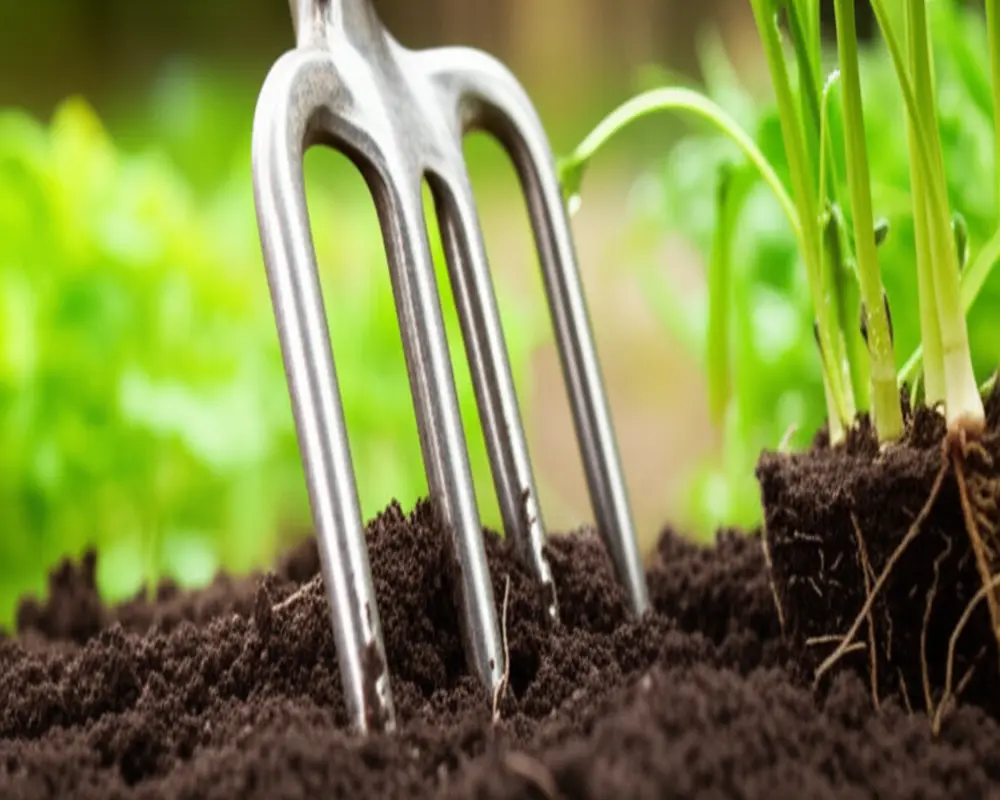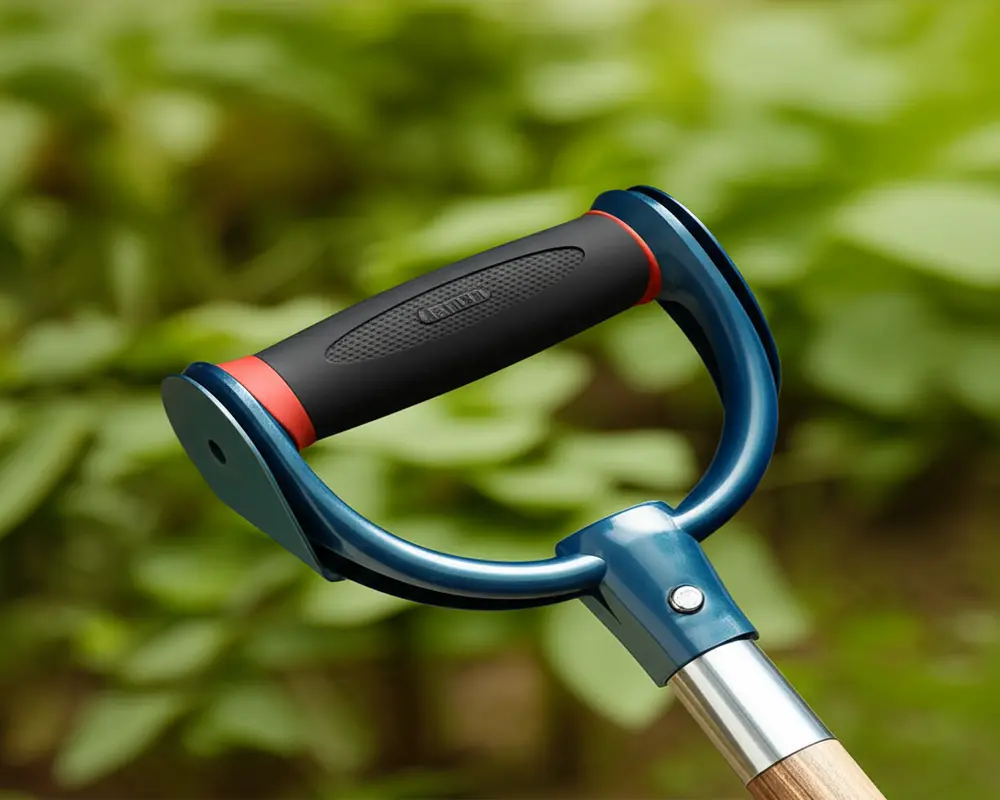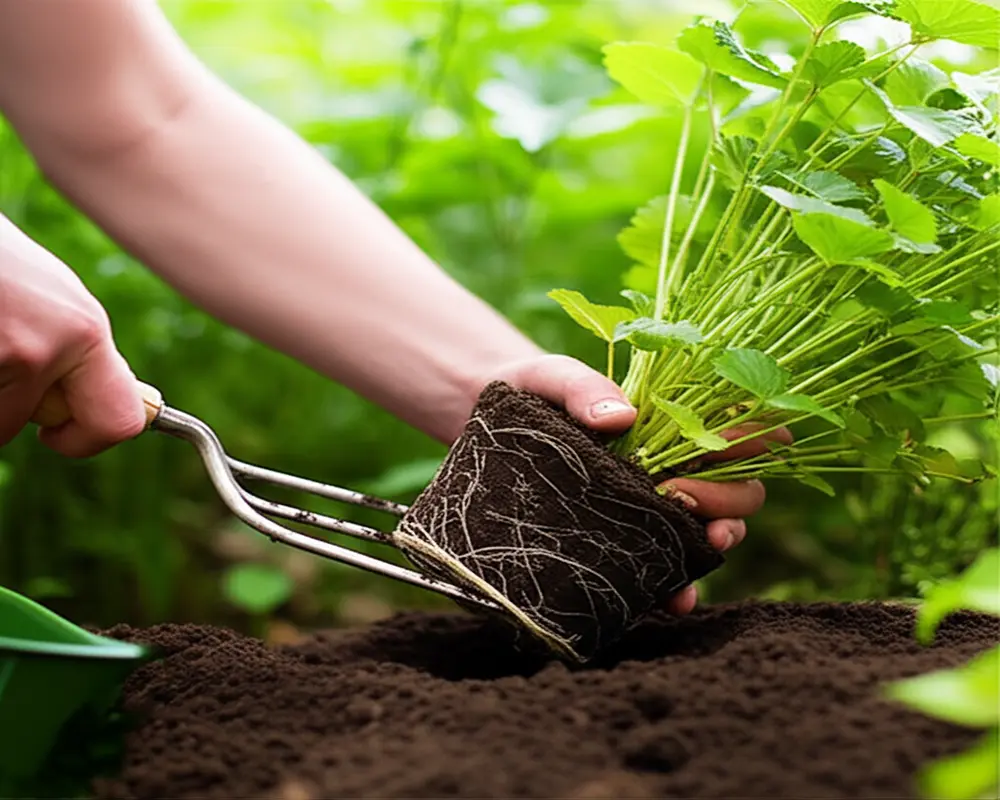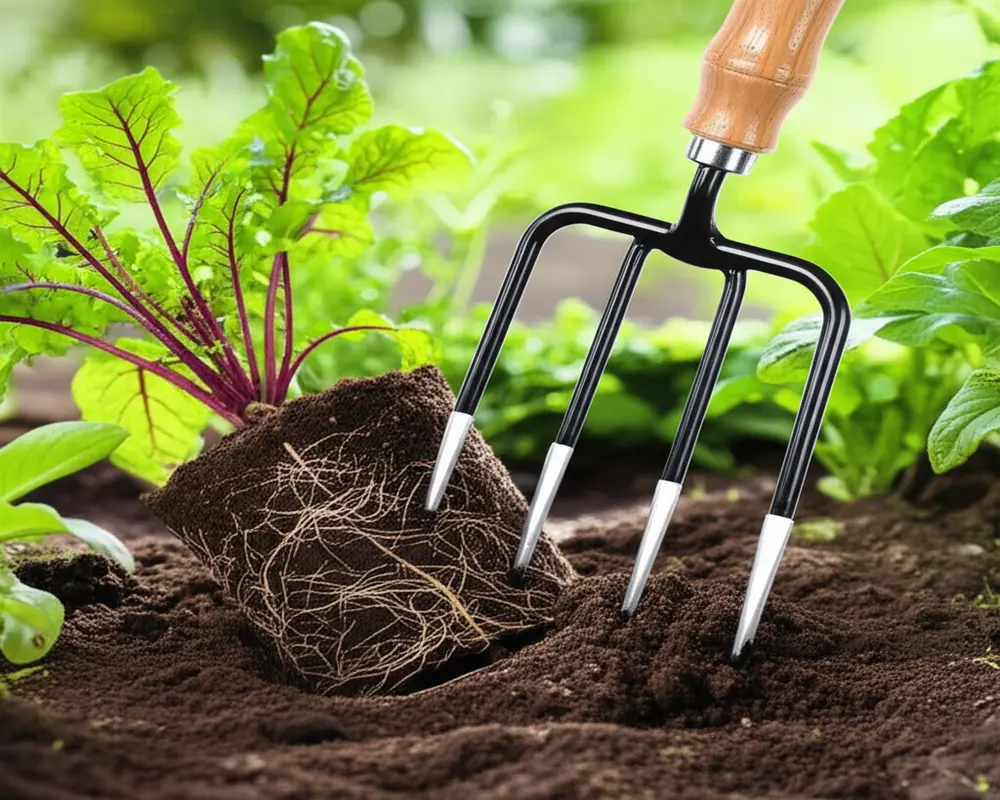In the realm of gardening, precision tools often make the difference between a struggling transplant and a thriving plant. The right garden fork for transplanting is indispensable for relocating delicate plants without damaging roots or soil structure. This guide delves into specialized transplanting forks, highlighting their unique design, top recommendations, and expert techniques to ensure you nurture healthy, flourishing garden specimens.
Thank you for reading this post, don't forget to subscribe!I. Introduction: Why a Specialized Garden Fork is Essential for Transplanting
Transplanting is a delicate task demanding tools tailored to minimize root disturbance and soil compaction. Unlike general digging forks, a transplanting fork features a design optimized for lifting and transferring plants safely. Suitable for loosening soil around sensitive root systems, these forks help gardeners successfully relocate perennials, shrubs, and other plants with minimal stress. This comprehensive 2025 guide explores the distinctive characteristics of garden tools for transplanting, including expert-picked models, essential attributes, and practical buying advice.
II. Understanding the “Transplanting Fork”: Key Features & Benefits
Tine Design
At the heart of any quality transplanting fork are its tines. Expertly crafted tines are sharp and sturdy, enabling effortless penetration of compacted soils and swift cutting through fine roots when necessary.
Additionally, the tines are often slightly curved or flat, specifically engineered to cradle the root ball with care, preventing damage during lifting. Optimal tine spacing balances firm support with ease of soil release, a crucial factor in reducing transplant shock.

Shaft & Handle
Durability and comfort hinge on the shaft and handle materials. Steel shafts offer strength but can be heavier, while fiberglass options provide a lighter-weight alternative without sacrificing resilience. Wood shafts combine traditional aesthetics with dependable performance. Handle length varies from short D-grips and T-grips suited for precision tasks, to longer handles providing additional leverage but requiring more physical effort.
An ergonomic garden fork handle is especially beneficial, reducing strain during repeated use. Whether a cushioned D-grip or a contoured long handle, ergonomic design fosters greater control and comfort.

Construction Quality
Solid construction is non-negotiable. Look for forks with well-welded joints and sufficient material thickness for longevity. Weight and balance affect user fatigue; a well-balanced fork should feel natural in the hand without excessive heaviness, ensuring sustained productivity.
III. Top-Rated Garden Forks Specifically for Transplanting (Expert Picks)
Our recommended forks have undergone rigorous testing across various soil conditions and plant sizes, emphasizing transplanting efficiency. Consider these top choices when selecting your ideal tool.
| Category | Recommended Product | Key Features | Why It Excels |
|---|---|---|---|
| Best Overall Transplanting Fork | GardenPro Deluxe Transplanting Fork | Stainless steel tines, ergonomic D-grip handle, lightweight fiberglass shaft | Balances strength, comfort, and precision for versatile transplanting tasks |
| Best for Large Shrubs & Established Plants | StrongRoot Heavy-Duty Fork | Reinforced steel tines, long wooden handle, robust build | Provides the leverage and durability needed for heavy lifting without root damage |
| Best for Perennials & Delicate Plants | SoftTouch Perennial Transplanting Fork | Curved, narrow tines; cushioned grip; lightweight design | Gentle on fragile root systems while facilitating precise soil loosening |
| Best Budget-Friendly Option | EcoGrow Basic Transplanting Fork | Carbon steel tines, simple D-grip handle, affordable price | Effective performance for gardeners new to transplanting without breaking the bank |
| Best Ergonomic Design | ErgoEase Comfort Fork | Soft rubber handle, balanced fiberglass shaft, sharp tines | Minimizes hand fatigue during extended use, ideal for arthritic or sensitive users |
| Innovative/Specialty Forks | Broadfork Root Lifter | Wide, flat tines; dual long handles | Specialized for lifting intact root balls and broad soil aeration |
IV. Buyer’s Guide: Choosing the Right Transplanting Fork
Identifying the best fork begins with understanding your gardening requirements. Consider the plants you typically transplant, soil hardness, and frequency of use alongside physical comfort.
Material-wise, stainless steel offers corrosion resistance and longevity, carbon steel delivers superior strength, while fiberglass shafts reduce weight and increase ease of handling. Wooden handles blend tradition with shock absorption but require maintenance.
Handle options significantly affect ergonomics. D-grip handles suit detailed work in tight spaces, T-grips provide control for root cutting, and long handles leverage power for larger plants.
Reputation and warranty underline product reliability. Trusted brands often provide satisfaction guarantees and support, enhancing purchase confidence.
Browsing customer reviews can reveal real-world performance insights, especially regarding the fork’s behavior in transplanting contexts. Pay special attention to feedback on root ball lifting fork efficiency and handle comfort.
When seeking ergonomic solutions for comfort and efficiency, the guide on ergonomic garden spades may provide complementary tips applicable to transplanting forks.

V. Transplanting Techniques with a Fork: Maximizing Success
Optimal transplanting begins with soil preparation. Water the area thoroughly before digging to ease soil penetration and reduce root breakage. Assess roots to identify any damaged parts requiring trimming.
Insert the fork around the plant carefully, prying soil loose with gentle rocking to preserve the root ball’s integrity. For delicate perennials, work shallowly to lift the entire root system intact. Using the fork’s curved tines, cradle the root ball when transferring.

Maintaining root integrity is paramount—avoid forcing the fork too aggressively, which risks root tears and transplant shock. After transplanting, water deeply and monitor plant health closely during the acclimatization period.
For further guidance on detailed transplanting care, consult the authoritative advice at Royal Horticultural Society and American Horticultural Society, which offer extensive resources for gardeners.
VI. Maintenance & Care for Your Transplanting Fork
Post-use cleaning prolongs tool life. Remove soil promptly using a stiff brush and rinse with water. If you notice dull edges, use proper sharpening tools to restore tine sharpness, enhancing performance.
Store forks in a dry place to avoid rust. Applying a protective coating such as oil to metal parts can prevent corrosion. Follow maintenance practices similar to those in the recommended read on how to sharpen pruning shears, which shares useful sharpening concepts applicable here.
VII. Frequently Asked Questions (FAQ)
Can a digging fork be used for transplanting? What are the differences?
While a digging fork can serve basic transplanting functions, it generally lacks the fine design elements—such as curved tines and ergonomic grips—optimized for gentle root ball lifting and root preservation. Transplanting forks focus on minimizing plant stress, whereas digging forks prioritize soil breaking.
What distinguishes a border fork from a digging fork?
Border forks usually have shorter, more closely spaced tines, designed for working in garden borders and bed edges, offering precision in confined spaces. Digging forks are larger, geared towards heavy soil work. The transplanting fork falls between these in specialization.
How to choose the right handle length?
Short handles offer better maneuverability and control for small plants and tight areas, while long handles provide greater leverage for larger shrubs and tougher soils. Match handle length to physical comfort and the usual scope of transplanting tasks.
What materials are best for rocky soil?
Carbon steel tines excel in rocky or compact soils due to their strength and rigidity. Fiberglass shafts enhance shock absorption. Avoid lightweight materials prone to bending under resistance.
When should I replace my garden fork?
Replace your fork if the tines become significantly bent, cracked, or worn to the point of poor soil penetration or root disruption, or if the handle weakens, compromising safety and effectiveness.
VIII. Conclusion: Invest in the Right Tool for Thriving Transplants
Selecting a dedicated garden fork for transplanting constitutes a foundational investment in successful plant relocation. Recognizing the distinctive design features and ergonomic benefits equips gardeners to nurture healthy transplants and reduce plant stress. Armed with expert picks and sound techniques delineated here, you are poised to make informed decisions that enrich your gardening endeavors.
Happy transplanting!

